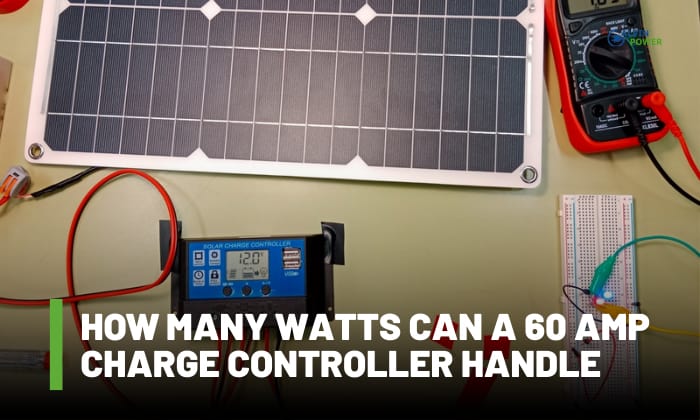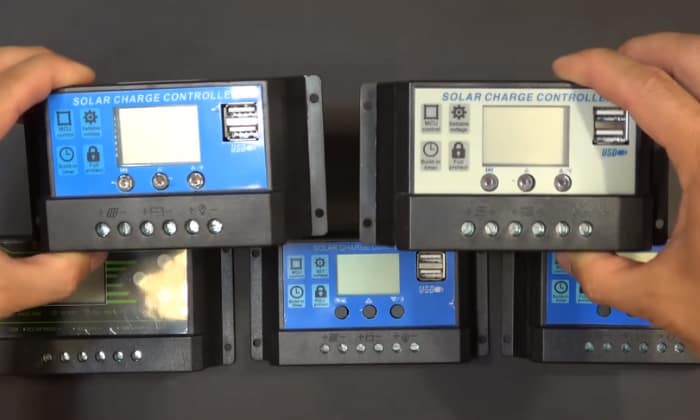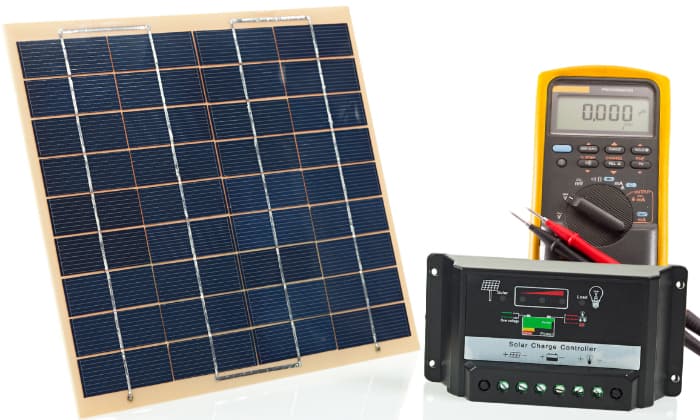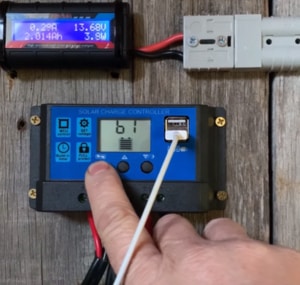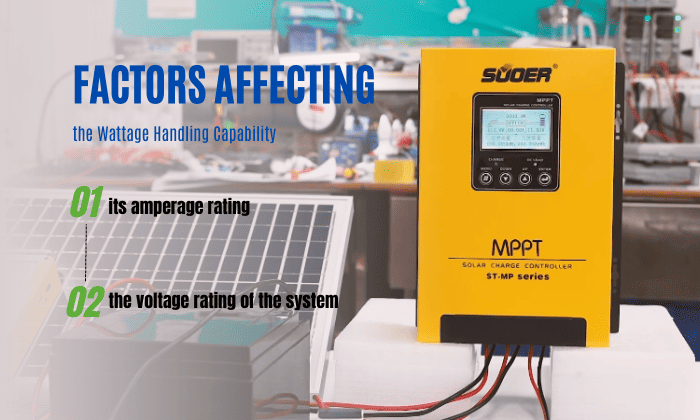In a solar electrical system, the charge controller is critical for managing the charging process and protecting the battery. Understanding its capabilities and limitations is critical for ensuring an effective and dependable power supply.
In this article, we will discuss how many watts can a 60 amp charge controller handle, as well as other essential factors to consider. Whether you’re a DIY solar system builder or simply looking for helpful information, this post is designed to give you the necessary information.
Table of Contents
The Capacity of a 60 Amp Charge Controller
Solar power has gained significant popularity in both residential and commercial applications due to its numerous benefits. Similar to any electrical system, it also consists of various components essential for ensuring safety and optimal performance.
One of its important parts is the charge controller, which regulates the electricity flow within the system. It acts as a bridge between the solar panels and the batteries, ensuring efficient charging and protecting the batteries from overcharging or over-discharging.
A charge controller usually comes with a current capacity of 10 amps up to 100 amps, which can be used in various system voltages such as 12, 24, and 48 volts.
Among the various charge controller ratings, the 60-amp rating is the most commonly used in medium to large solar electrical systems. This rating indicates that the charge controller can handle a maximum current of 60 amps.
Wattage Calculation
To calculate the wattage of a charge controller, you need to consider first the amperage rating of the controller and the voltage that is being used in the system. Then you can use this basic formula Watts = Amp rating x System voltage.
For example, we have a 60 amps charge controller at 12V, 24V, and 48v.
- 60 amps x 12v = 720 watts
- 60 amps x 24v = 1,440 watts
- 60 amps x 48v = 2,880 watts
To further illustrate the capacity ratings of different charge controllers in specific voltage systems, refer to the detailed table below:
| Charge Controller Amp Rating | Battery System Voltage | Maximum Wattage The Controller can Handle |
| 10 Amps | 12v | 120 Watts |
| 10 Amps | 24v | 240 Watts |
| 20 Amps | 12v | 240 Watts |
| 20 Amps | 24v | 480 Watts |
| 30 Amps | 12v | 360 Watts |
| 30 Amps | 24v | 720 Watts |
| 40 Amps | 12v | 480 Watts |
| 40 Amps | 24v | 960 Watts |
| 50 Amps | 12v | 600 Watts |
| 50 Amps | 24v | 1,200 Watts |
| 60 Amps | 12v | 720 Watts |
| 60 Amps | 24v | 1,440 Watts |
| 60 Amps | 48v | 2,880 Watts |
| 70 Amps | 12v | 840 Watts |
| 70 Amps | 24v | 1,680 Watts |
| 70 Amps | 48v | 3,360 Watts |
| 80 Amps | 12v | 960 Watts |
| 80 Amps | 24v | 1,920 Watts |
| 80 Amps | 48v | 3,840 Watts |
| 90 Amps | 12v | 1,080 Watts |
| 90 Amps | 24v | 2,160 Watts |
| 90 Amps | 48v | 4,320 Watts |
| 100 Amps | 12v | 1,200 Watts |
| 100 Amps | 24v | 2,400 Watts |
| 100 Amps | 48v | 4,800 Watts |
Different Types of Charge Controller
Charge controllers come in different types, with the two most common ones being Pulse Width Modulation (PWM) and Maximum Power Point Tracking (MPPT).
1. PWM (pulse width modulation)
A PWM solar charger controller is a traditional and less expensive charge controller choice. It operates by rapidly switching the output voltage of the solar panel on and off in order to maintain a specific battery voltage. This type is appropriate for smaller solar power systems and has a simpler design and operation.
2. MPPT (maximum power point tracking)
It is a more advanced and efficient type of charge controller. It can handle more power from the solar panel than a PWM charge controller, especially when the panel voltage is higher than the battery voltage. However, due to some advanced features, it is more expensive but provides greater efficiency and performance.
Factors Affecting the Wattage Handling Capability
The two main factors that affect the wattage rating of a charge controller include:
- its amperage rating
- the voltage rating of the system
Generally, a higher amperage unit, such as a 60 amp MPPT solar charge controller, allows more wattage to run through and transfer to the battery bank.
At the same time, the voltage rating of the solar power system is a crucial factor in determining the wattage handling capability of the charge controller. Its wattage capacity increases with higher system voltages.
Tips for Properly Sizing a Charge Controller
Properly sizing a charge controller is crucial for ensuring your solar power system’s efficient and reliable operation.
To achieve this, it is important to verify that your charge controller can handle your solar panels’ voltage and amperage requirements.
- You can start by getting all panels’ current ratings and comparing them to your charge controller’s spec.
- Furthermore, adding a safety factor of at least 25% of the total charge of the solar system will ensure that your charge controller will not get overloaded
- However, suppose you are unsure about the proper sizing of a charge controller for your electrical system. In that case, consulting with a professional or reputable solar installer is recommended. They have the expertise to assess your system requirements and recommend the appropriate charge controller size.
Frequently Asked Questions
What Happens If I Exceed the Wattage Capacity of A 60 Amp Charge Controller?
Exceeding the wattage capacity of a 60 amp solar charge controller can lead to overheating and potentially damage or even failure. It can also reduce efficiency and compromise the performance of the entire solar power system.
Can I Connect Multiple Solar Panels to a 60 Amp Charge Controller?
Yes, connecting multiple solar panels to a 60A charge controller is possible, provided that the combined wattage of the panels does not exceed the charge controller’s wattage handling capacity.
Is It Possible to Upgrade the Wattage Capacity of a Charge Controller?
No. The charge controller should be properly sized for the system. Upgrading the charge controller may cause overheating, leading to an inefficient electrical system and potentially damaging your electronics, especially the battery.
MPPT Vs. PWM Charge Controllers: Which is Better?
Choosing which is better between these two charge controllers depends on what suits your needs. MPPT charge controllers are generally considered better due to their higher efficiency, flexibility in panel configuration, and better performance in low-light conditions.
On the other hand, PWM kits are simpler and more cost-effective but may have limitations in big solar systems.
Conclusion
Understanding how many watts can a 60 amp charge controller handle is crucial for designing and optimizing solar systems. By considering the ampere rating, calculating wattage, and properly sizing the charge controller, you can ensure your electrical setup’s efficient and reliable operation.
However, if you lack knowledge of solar electrical systems, it is highly recommended to seek the expertise of a professional to ensure the best outcomes for your project.

I am Edwin Jones, in charge of designing content for Galvinpower. I aspire to use my experiences in marketing to create reliable and necessary information to help our readers. It has been fun to work with Andrew and apply his incredible knowledge to our content.

